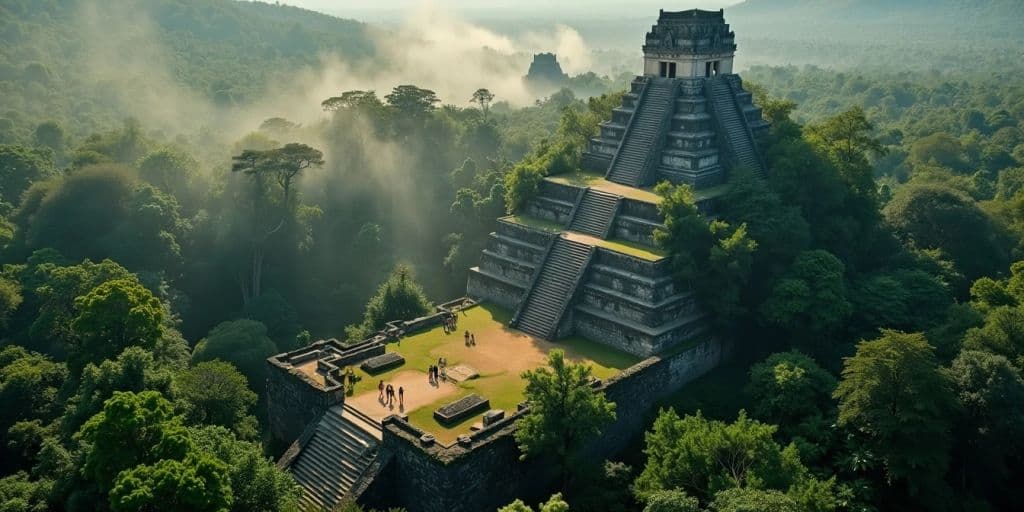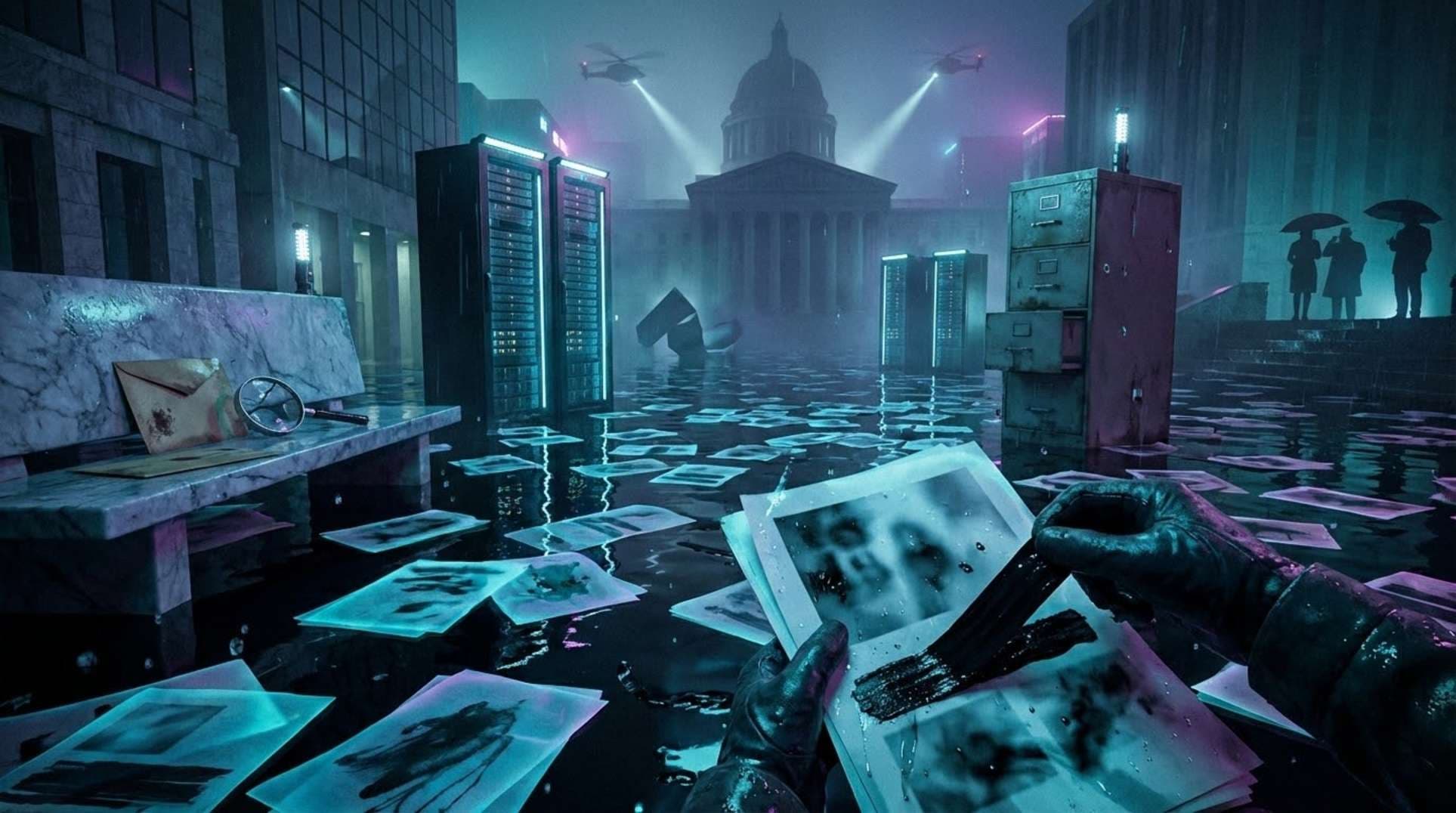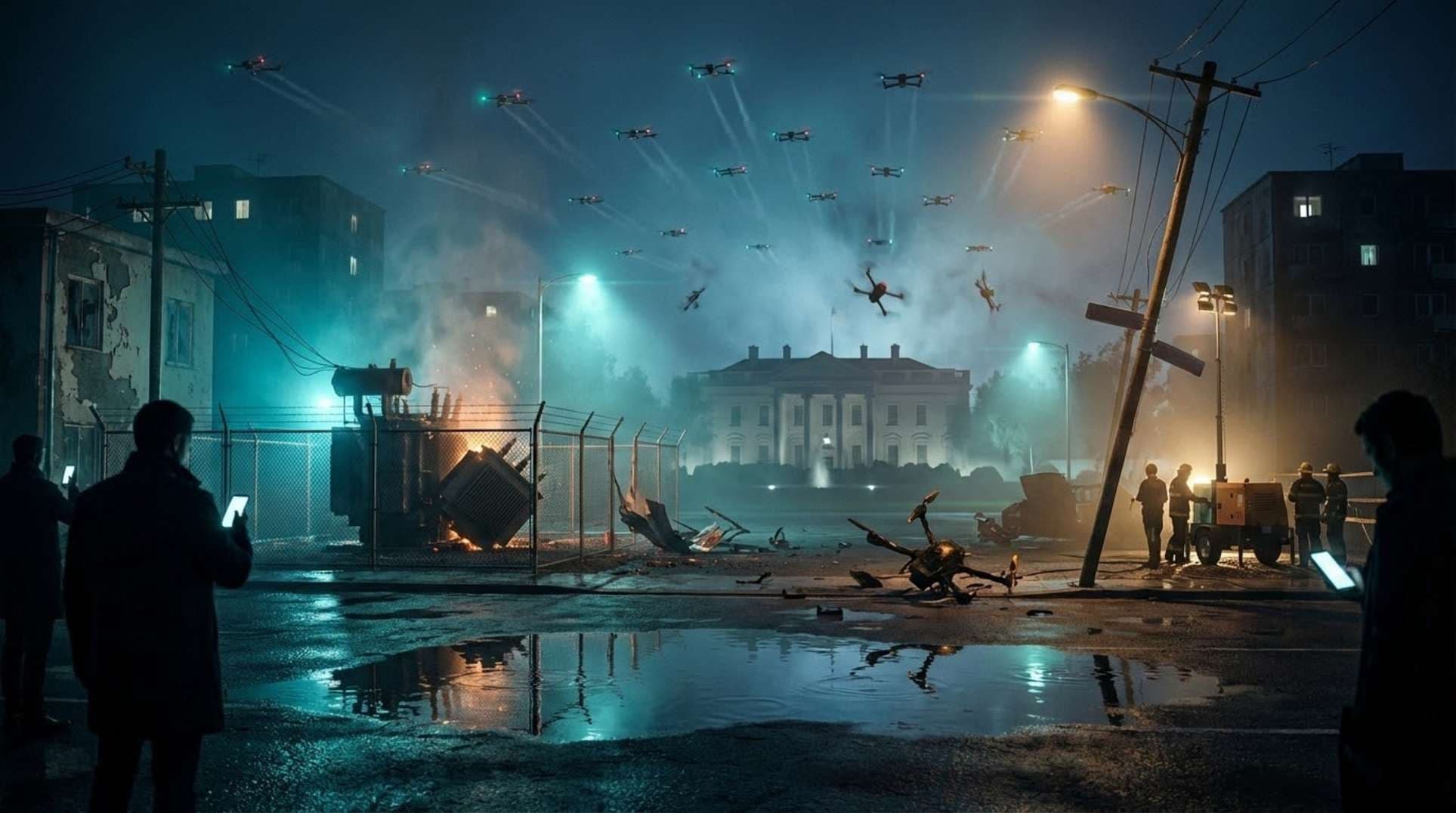Imagine walking through the ruins of ancient cities, each stone whispering tales of long-gone civilizations. From the towering structures of Machu Picchu to the mysterious legend of Atlantis, these lost worlds captivate our imagination. In this article, we’ll explore some of the most fascinating lost civilizations, uncovering their secrets and marveling at their achievements.
Key Takeaways
- Machu Picchu showcases the advanced engineering and architectural skills of the Inca civilization.
- The legend of Atlantis continues to intrigue with various theories and expeditions seeking its location.
- Pompeii offers a unique glimpse into daily Roman life, frozen in time by a volcanic eruption.
- The Maya civilization is known for its impressive cities and astronomical knowledge, yet its sudden decline remains a mystery.
- Ancient astronaut theory suggests that extraterrestrial beings may have influenced early human cultures, sparking much debate.
Machu Picchu: The Lost City of the Incas

Rediscovery and Exploration
High in the Peruvian Andes, Machu Picchu remained hidden from the world until its rediscovery in 1911 by Hiram Bingham. This ancient Incan city, perched among the clouds, has since become a symbol of the enduring allure of ancient mysteries. Bingham’s expedition brought global attention to this remarkable site, sparking further exploration and study.
Architectural and Engineering Marvels
Machu Picchu showcases the architectural brilliance of the Inca civilization. The city features intricate stone structures, terraced fields, and advanced water management systems. The precision of the stonework, without the use of mortar, highlights the Incas’ engineering prowess. Visitors can marvel at the Temple of the Sun, the Intihuatana stone, and the Room of the Three Windows.
Mysteries and Theories
Despite extensive research, many aspects of Machu Picchu remain shrouded in mystery. Scholars debate its purpose, with theories ranging from a royal estate to a religious site. Some suggest it had astronomical alignments, adding to its enigmatic nature. The exact reason for its abandonment also continues to puzzle historians.
Preservation Efforts
Preserving Machu Picchu for future generations is a significant challenge. The site faces threats from natural erosion, tourism, and environmental changes. Efforts are ongoing to balance preservation with accessibility, ensuring that this iconic symbol of the Inca civilization remains intact for years to come.
Machu Picchu stands as a testament to the ingenuity and resilience of the Inca civilization, captivating the imaginations of all who visit.
The Enigma of Atlantis: From Myth to Reality?
Historical Origins of the Atlantis Myth
The legend of Atlantis has fascinated people for thousands of years. Plato described Atlantis as a powerful and advanced civilization that met a sudden, catastrophic end. This tale of grandeur and destruction has sparked countless debates and theories.
Theories and Hypotheses
Many theories have been proposed about the true nature of Atlantis. Some believe it was a real place, while others think it was purely a myth. Theories range from it being located in the Mediterranean to the Americas. Each theory tries to explain the mysteries and clues left behind.
Clues and Expeditions
Over the years, many explorers have searched for Atlantis. They have looked for evidence in various parts of the world, hoping to find the lost city. These expeditions have uncovered interesting clues, but the true location of Atlantis remains a mystery.
Atlantis in Popular Culture
Atlantis has also made a significant impact on popular culture. It has been featured in books, movies, and TV shows, capturing the imagination of people everywhere. The legend of Atlantis continues to inspire and intrigue, keeping the mystery alive.
Pompeii: A Time Capsule of Ancient Roman Life
The Eruption of Mount Vesuvius
In 79 AD, Mount Vesuvius erupted, burying the bustling city of Pompeii under layers of volcanic ash and pumice. This catastrophic event preserved the city in a unique way, freezing a moment in time. The eruption’s suddenness left the city almost perfectly intact, providing a detailed snapshot of Roman life.
Rediscovery and Excavation
Pompeii lay hidden for centuries until its rediscovery in the 18th century. Archaeologists began to uncover its remarkably preserved streets, buildings, and even the remains of its inhabitants. The rediscovery offered an unprecedented look into ancient Roman society, revealing everything from grand villas to humble shops.
Daily Life in Pompeii
Walking through Pompeii’s ancient alleys, one can see the opulent villas, public baths, and bustling marketplaces that once thrived. The haunting plaster casts of residents caught in their final moments add a poignant touch to the city’s story. These casts provide a human connection to the tragedy, making the past feel incredibly real.
Preservation and Challenges
Preserving Pompeii is an ongoing effort. The site faces numerous challenges, including weathering, tourism, and natural decay. Modern preservation techniques are employed to protect this UNESCO World Heritage site for future generations. The meticulous work of archaeologists and conservators ensures that Pompeii remains a valuable window into the past.
Pompeii’s rediscovery has allowed us to explore intriguing mysteries of ancient Roman life, offering insights that continue to captivate historians and visitors alike.
Lost in the Jungle: Unraveling the Secrets of the Maya Civilization
Hidden deep within the lush jungles of Mesoamerica, the Maya civilization thrived for centuries, leaving behind a legacy of architectural and astronomical wonders. The decline of the Maya remains one of history’s great mysteries, as many of their cities were mysteriously abandoned. Let’s explore the major Maya cities, their achievements, and the ongoing discoveries that continue to shed light on this fascinating civilization.
Major Maya Cities
The Maya civilization was home to several major cities, each with its own unique features and significance. Some of the most notable cities include:
- Tikal: Located in present-day Guatemala, Tikal was one of the most powerful kingdoms of the ancient Maya.
- Caracol: Situated in Belize, Caracol is known for its impressive architecture and large-scale construction projects.
- Calakmul: Found in Mexico, Calakmul was a major rival to Tikal and played a crucial role in Maya politics.
Astronomical and Architectural Achievements
The Maya were renowned for their advanced understanding of astronomy and architecture. They built intricate temples and observatories that aligned with celestial events. Their calendar systems, including the famous Long Count calendar, were highly sophisticated and accurate.
Theories on the Maya Collapse
Numerous theories have been proposed to explain the mysterious collapse of the Maya civilization. Some of the most prominent theories include:
- Environmental Factors: Droughts and deforestation may have led to resource depletion and societal collapse.
- Warfare: Intense warfare between city-states could have weakened the civilization.
- Social Unrest: Internal strife and political instability may have contributed to the decline.
Ongoing Discoveries
Archaeologists continue to uncover new information about the Maya civilization. Recent discoveries, such as the use of LiDAR technology to reveal hidden structures beneath the jungle canopy, have provided valuable insights into the extent and complexity of Maya cities. These ongoing discoveries help us better understand the daily lives, culture, and eventual decline of the Maya people.
"The Lost World of the Maya" is a comprehensive documentary that offers a detailed exploration of the ancient Maya civilization. Released in 2019, it provides an in-depth look at their achievements and mysteries.
Petra: The Rose-Red City of the Desert
Historical Significance
Petra, located in southwest Jordan, was once a bustling hub for trade and commerce during the Nabatean era. The city was built on a terrace, pierced from east to west by the Wadi Musa (the Valley of Moses). Petra’s strategic location allowed it to thrive as a center for merchants and travelers.
Architectural Wonders
The most iconic structure in Petra is the Treasury (Al-Khazneh), which showcases the architectural brilliance of the Nabateans. Visitors can marvel at the intricate rock-cut facades and explore hidden tombs. The engineering marvels of Petra also include an advanced water management system that allowed water to flow through the arid landscape.
Rediscovery in the 19th Century
Petra was lost to the Western world for centuries until its rediscovery in 1812 by Swiss explorer Johann Ludwig Burckhardt. His findings brought global attention to the ancient city, sparking interest and further exploration.
Modern-Day Preservation
Today, Petra is a UNESCO World Heritage Site, and efforts are ongoing to preserve its unique structures and history. Preservation challenges include natural erosion and the impact of tourism. However, dedicated efforts continue to protect this rose-red city for future generations.
Ancient Astronaut Theory: Visitors from the Stars

Evidence in Ancient Artworks and Texts
The ancient astronaut theory suggests that extraterrestrial beings visited Earth in ancient times and influenced human civilizations. Proponents of this theory point to ancient artworks and texts as evidence. For example, petroglyphs from Val Camonica, Italy, are believed by some to resemble modern astronauts. These interpretations, however, are highly debated.
Debates and Criticisms
The theory has sparked numerous debates and criticisms. Skeptics argue that there is no concrete evidence to support the idea of ancient alien visitors. They believe that the interpretations of ancient artworks are often exaggerated or misrepresented. Despite the lack of solid proof, the theory continues to captivate the imagination of many.
Influence on Popular Culture
The ancient astronaut theory has had a significant impact on popular culture. It has inspired numerous books, movies, and TV shows. The idea of ancient aliens has become a popular theme in science fiction, further fueling public interest and belief in the theory.
Impact on Understanding Ancient Mysteries
While the theory remains controversial, it has encouraged people to look at ancient mysteries from new perspectives. By considering the possibility of otherworldly encounters, we open ourselves to new ways of thinking about the development of human civilizations. This belief in alien visitors continues to be a topic of fascination and debate.
Have you ever wondered if ancient astronauts visited Earth? Dive into the fascinating world of the Ancient Astronaut Theory and explore the possibility of visitors from the stars. For more intriguing insights and exclusive content, visit our website and start your free trial today!
Conclusion
Exploring lost civilizations is like opening a time capsule that connects us to our distant past. From the towering pyramids of Egypt to the mysterious ruins of Machu Picchu, each ancient site tells a story of human ingenuity, culture, and life. These discoveries not only satisfy our curiosity but also teach us valuable lessons about our ancestors. As we continue to uncover these hidden gems, we gain a deeper understanding of where we come from and how past civilizations have shaped our world today. The journey of exploring these ancient wonders is ongoing, and with each new find, we get closer to piecing together the grand puzzle of human history.
Frequently Asked Questions
What is Machu Picchu and why is it important?
Machu Picchu is an ancient Inca city located high in the Andes Mountains of Peru. It is important because it showcases the engineering skills and architectural genius of the Inca civilization. It was rediscovered in 1911 and is now a UNESCO World Heritage Site.
Is Atlantis real or just a myth?
Atlantis is a legendary island mentioned by the ancient Greek philosopher Plato. While many believe it to be a myth, some researchers and explorers have proposed various theories and locations for its existence. However, no concrete evidence has been found to prove Atlantis was real.
What happened to Pompeii?
Pompeii was an ancient Roman city that was buried under volcanic ash and pumice when Mount Vesuvius erupted in 79 AD. The city was lost for centuries until it was rediscovered in the 18th century. Its ruins provide a detailed look into Roman life.
Who were the Maya, and what are they known for?
The Maya were an ancient civilization that lived in what is now Mexico, Guatemala, Belize, Honduras, and El Salvador. They are known for their advanced knowledge of astronomy, impressive architectural structures, and complex calendar systems. The reason for their civilization’s decline remains a mystery.
What makes Petra special?
Petra, also known as the Rose-Red City, is an ancient city carved into the rock in present-day Jordan. It was the capital of the Nabataean Kingdom and is famous for its stunning architecture and water conduit system. It was rediscovered in 1812 and is now a UNESCO World Heritage Site.
What is the Ancient Astronaut Theory?
The Ancient Astronaut Theory suggests that extraterrestrial beings visited Earth in ancient times and influenced human civilizations. This theory is based on interpretations of ancient artworks and texts. While it has gained popularity in media, it is widely debated and criticized by scholars.




